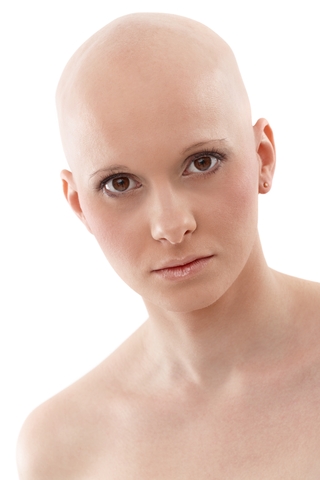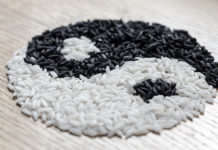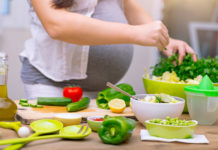
by: Dr. Craig A. Maxwell
October is Breast Cancer Awareness Month. Everywhere you look, you will notice well-meaning individuals wearing pink ribbons, passing out leaflets, and encouraging women to get a mammogram for the purposes of early breast cancer detection. While I applaud the intention of these efforts, there’s some information missing in these yearly campaigns.
Pink Campaigns Don’t Focus on the Cause
Since breast cancer is the leading cause of death among women aged 45-55, pink campaigns are focused on getting the word out about screening. Unfortunately, these campaigns also have another side that deeply concerns me.
For one, pink ribbon campaigns focus largely on a sense of solidarity among women with breast cancer. While emotional support is necessary for any woman battling this disease, community seems to be its primary focus, not prevention or finding a cure.
Another disturbing fact is these companies who claim they are “fighting for a cure” often sell products that have been linked to the development of breast cancer.
Overlooked Causes of Breast Cancer
- Dietary Toxins
Dietary toxins are the foremost contributor to the development of cancer and it’s shocking how few people talk about or even acknowledge this.
If you eat a primarily processed-food diet, here is a list of the cancer-causing chemicals you’re ingesting:
- Aspartame – The Ramazzini Study showed a significant statistical increase in breast cancer among animals exposed to this dangerous synthetic sweetener found in diet soda, gum, breakfast cereal, and yogurt.
- BHT & BHA – These synthetic “antioxidants” are anything but good for your health. They have been linked to the development of several types of cancers, including breast. BHT & BHA is often found in breakfast cereals, processed meats, candy, chewing gum, vegetable oils, and more.
- Food Dyes – Scientific studies have shown that food dyes such as Blue 1 and Yellow 5 contribute to the development of various types of cancer.
- MSG – Monosodium glutamate is a synthetic food additive that imparts an addictive, savory taste to foods. It has been linked to the development of neurological disease, liver disease, autoimmune disease, and cancer.
The disappointing thing about many of the products that go pink for breast cancer awareness is that they contain many of the above-mentioned carcinogens and more.
- Environmental Toxins
Environmental toxins are another strong contributor to the development of breast cancer. Like synthetic food manufacturers, many of the companies who make these toxins also “go pink” for breast cancer awareness month. Unbelievable!
Here are just some of the everyday toxins linked to the development of breast cancer:
- Parabens – Parabens are found in many commercial cosmetic products including lotions, antiperspirant, shampoos, and body sprays. According to clinical studies, a high amount of parabens have been found in the tissue of women with breast cancer.
- Phthalates – These endocrine disruptors have been linked to the development of breast cancer, neurological disease, and immune system dysfunction. Phthalates can be found in hundreds of cosmetics and household cleaning products.
- Formaldehyde – Even the Centers for Disease Control has admitted that formaldehyde is a carcinogen yet it’s found in dozens of commercial cleaning products.
- BPA – BPA (bisphenol A) is a plasticizer found in plastic bottles, canned food, dental sealants, and cashier receipts. This compound has been strongly linked to the development of breast cancer.
- PFOA – Perfluorooctanoic acid (PFOA) can be found in cookware, stain-resistant carpets, carpet cleaners, water-proof clothing, microwave popcorn, and drinking water. It has been linked to the development of cancer.
Reduce Your Chance Of Breast Cancer Naturally
- Cut Synthetic Chemicals from Your Diet
To reduce you chance of breast cancer naturally, you must clean up your diet. Slowly wean off highly processed foods containing chemicals and trade them in for whole-food fare. The more organic produce, beans, nuts, seeds, meat, poultry, fish, eggs, dairy, and healthy fats you eat, the stronger your immune system and the better equipped you’ll be to stave off cancer.
- “Green” Your Environment
Once you clean up your diet, take a good look at your cosmetics and cleaning products. Many of the products you use everyday could cause you to develop breast cancer or other serious diseases. Trade your commercial cosmetics for organic make-up, skin, and hair care products. You can easily clean your home with white vinegar, lemon juice, and castile soap.
- Use Lymphatic Breast Massage
A toxic and sedentary lifestyle can interfere with the way your body disposes of toxins. Lymphatic breast massage can be done at home to gently detoxify your breasts and prevent the retention of toxins.
- Optimize Your Vitamin D3 Levels
Over 85% of my patients are deficient in vitamin D3. This hormone is responsible for good neurological and immune health. Without it, you are more susceptible to a wide variety of mental and physical health problems.
Vitamin D has been linked to the development of several different types of cancer including skin and breast. I recommend all my patients with chronic illness or cancer optimize their vitamin D levels by first having their blood levels checked and adding an ultra-high-grade vitamin D3 supplement.
Though conventional medicine advises 400-600 IUs of vitamin D3 per day, I recommend much more. Most adults need anywhere from 2,000-5,000 IUs to maintain optimum levels. This is especially true for those who live in colder climates or those who do not get much sun exposure throughout the day.
The pink campaign would have you believe that early detection is your key to beating breast cancer. There is no doubt this is important! What they don’t tell you is how much power you have to PREVENT the development of breast cancer in the first place.
Even if you have a family history of breast cancer, I strongly believe that you can reduce your risk by following these recommendations.
In a future article I will be discussing mammograms, thermal mammography, self-breast exams, and physician exams.
During breast cancer awareness month, spread this important information on to a friend. It could very well save her life!
Resources:








